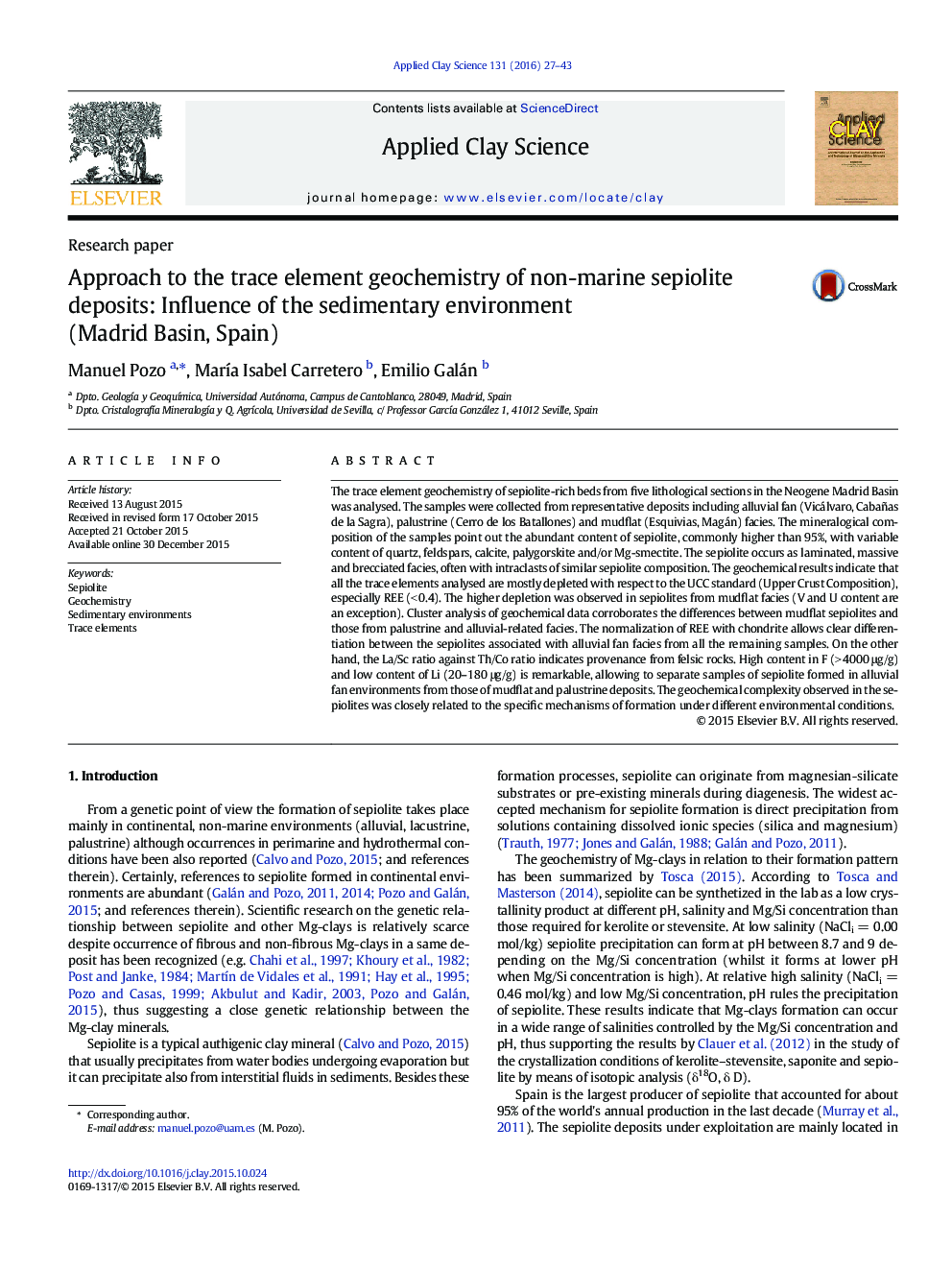| Article ID | Journal | Published Year | Pages | File Type |
|---|---|---|---|---|
| 1901368 | Applied Clay Science | 2016 | 17 Pages |
•We analyse sepiolite from different sedimentary environments.•The geochemistry of sepiolite was controlled by the sedimentary environment.•The mechanism of sepiolite formation has geochemical fingerprint.
The trace element geochemistry of sepiolite-rich beds from five lithological sections in the Neogene Madrid Basin was analysed. The samples were collected from representative deposits including alluvial fan (Vicálvaro, Cabañas de la Sagra), palustrine (Cerro de los Batallones) and mudflat (Esquivias, Magán) facies. The mineralogical composition of the samples point out the abundant content of sepiolite, commonly higher than 95%, with variable content of quartz, feldspars, calcite, palygorskite and/or Mg-smectite. The sepiolite occurs as laminated, massive and brecciated facies, often with intraclasts of similar sepiolite composition. The geochemical results indicate that all the trace elements analysed are mostly depleted with respect to the UCC standard (Upper Crust Composition), especially REE (< 0.4). The higher depletion was observed in sepiolites from mudflat facies (V and U content are an exception). Cluster analysis of geochemical data corroborates the differences between mudflat sepiolites and those from palustrine and alluvial-related facies. The normalization of REE with chondrite allows clear differentiation between the sepiolites associated with alluvial fan facies from all the remaining samples. On the other hand, the La/Sc ratio against Th/Co ratio indicates provenance from felsic rocks. High content in F (> 4000 μg/g) and low content of Li (20–180 μg/g) is remarkable, allowing to separate samples of sepiolite formed in alluvial fan environments from those of mudflat and palustrine deposits. The geochemical complexity observed in the sepiolites was closely related to the specific mechanisms of formation under different environmental conditions.
